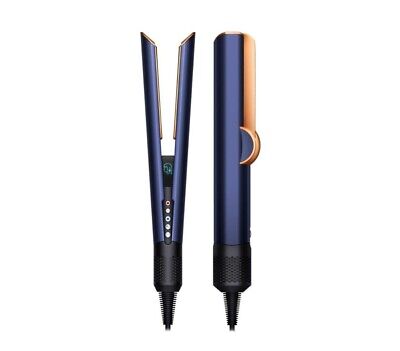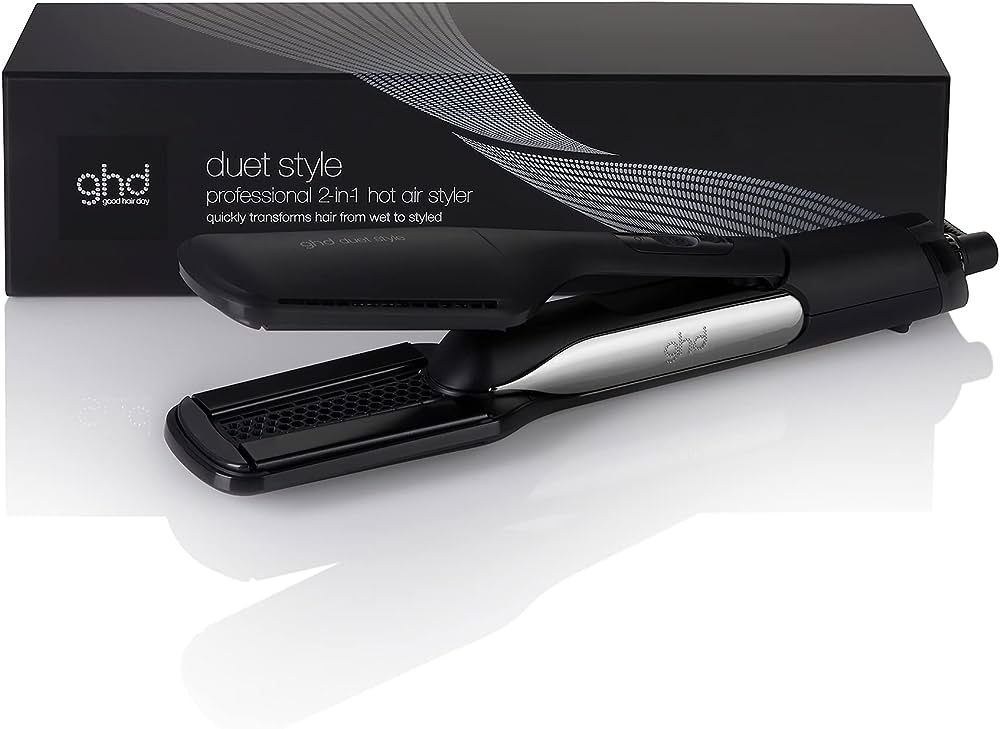We’ve all had that moment: you step out of the shower, towel off your hair, glance at the clock, and think, “Am I seriously supposed to blow-dry and straighten this mop before work?” That’s where tools like the Dyson Airstrait and ghd Duet Style come in. These aren’t just hair straighteners—they’re supposed to dry and style your hair at once. No juggling tools, no double heat exposure, just sleek hair in less time. That’s the promise anyway.
But once we put both of them through the wringer, it was clear: they’re playing very different games. One is like a futuristic hair-care robot from the future. The other? A reliable multitasker that knows exactly what it’s doing. Let’s unpack everything—because if you’re going to spend this much on a styler, you deserve to know which one’s going to make mornings easier.
Different philosophies behind the same idea
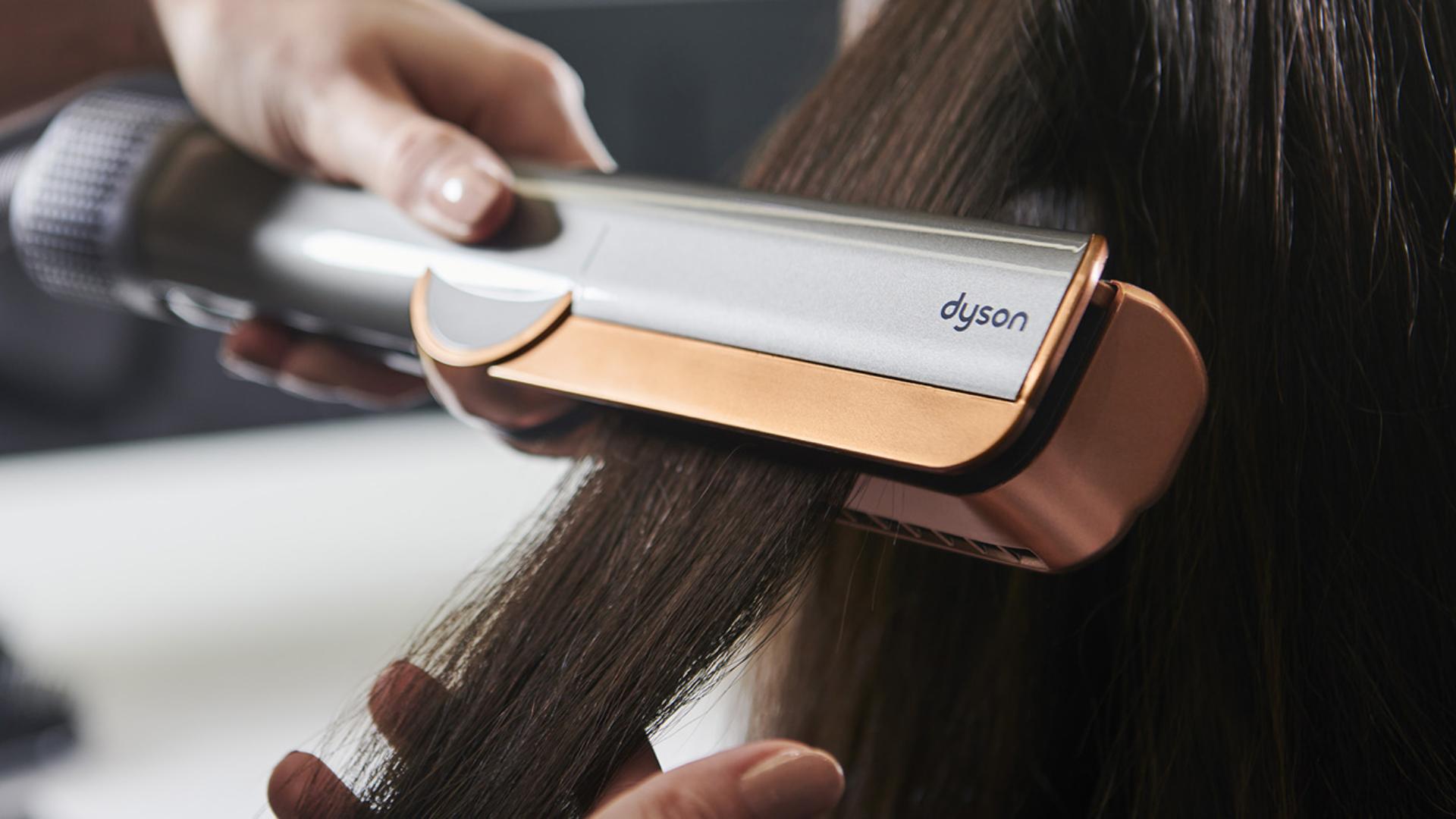
First things first: both of these tools are chasing the same goal—drying and styling hair simultaneously without frying it. But they couldn’t be more different in how they go about it.
The Dyson Airstrait doesn’t use hot plates at all. Instead, it blasts high-pressure air along your hair strands, straightening as it dries—no contact with a heated surface. It’s all airflow and smart temperature regulation.
The ghd Duet Style does use plates, but they’re part of a hybrid system. It dries with warm air as you glide the tool through damp hair, then lets you switch into traditional straightener mode with its Shine Shot—a full heat plate mode for use on dry hair. So it can morph between a wet-to-dry device and a classic flat iron.
That means Dyson’s all about protection and gentleness, while ghd is more about speed and styling power. Two very different vibes.
Drying performance: the great air showdown
Here’s where we noticed the biggest split. Dyson uses directional airflow projected along the hair shaft—no contact, just heat-controlled air. It’s clever. It keeps hair looking smooth and shiny, and you don’t get that scorched-hair feeling even after a few passes.
But it’s not lightning fast. Especially on thicker or coarser hair, it takes a bit more time to fully dry and smooth out each section. You kind of have to go slow and be methodical, which can feel like a trade-off.
ghd, on the other hand, combines ceramic plates with warm air, and the results are quicker. It grips the hair between its smart plates and pushes air through at the same time—so you’re getting contact heat and airflow at once. It dries faster, and one pass is often enough. But yeah, it’s more aggressive. You feel that it’s hotter and that your hair’s being worked harder.
For finer hair types or anyone worried about heat damage, Dyson feels safer. But if time is of the essence, ghd pulls ahead with sheer drying speed.
Styling results: one-track vs. multi-trick
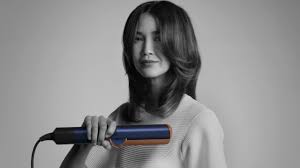
Here’s where things shift again. The Dyson Airstrait is amazing at one thing: straightening wet hair. It delivers a sleek finish that looks polished and natural. No frizz, no singed ends, no need for a follow-up tool. But that’s about all it does. It’s not meant to curl or wave—it’s not even shaped to make that possible.
The ghd Duet Style? It’s a chameleon. It can do the wet-to-dry job with ease, and then—once your hair’s dry—you hit that Shine Shot button, and boom: full flat iron mode. 185°C ceramic plates with predictive sensors, no airflow, just smooth, shiny heat styling. That means you can flip ends, create waves, do some subtle curling… all the stuff you’d do with a normal straightener.
So while Dyson nails the “wash and go sleek” look, ghd gives you options. It’s the only one of the two that lets you actually style with versatility.
Controls and usability: sleek vs. simple
Dyson’s interface is very on-brand: a digital screen, airflow and heat options, even a cool shot button. It feels modern, a little techy, and it’s undeniably beautiful. But you kind of need two hands to adjust it mid-session, which isn’t ideal when you’re in a rush or working with thicker hair.
ghd keeps it old-school, but in a good way. Just one button for power, one for Shine Shot, and a tone that tells you when it’s ready. No screen, no airflow settings, no guesswork. And honestly? It’s refreshing. You don’t have to think—you just use it.
So if you like tech and customization, Dyson feels more high-end. If you want plug-and-play, ghd is the no-nonsense pick.
Temperature tech: sensors everywhere
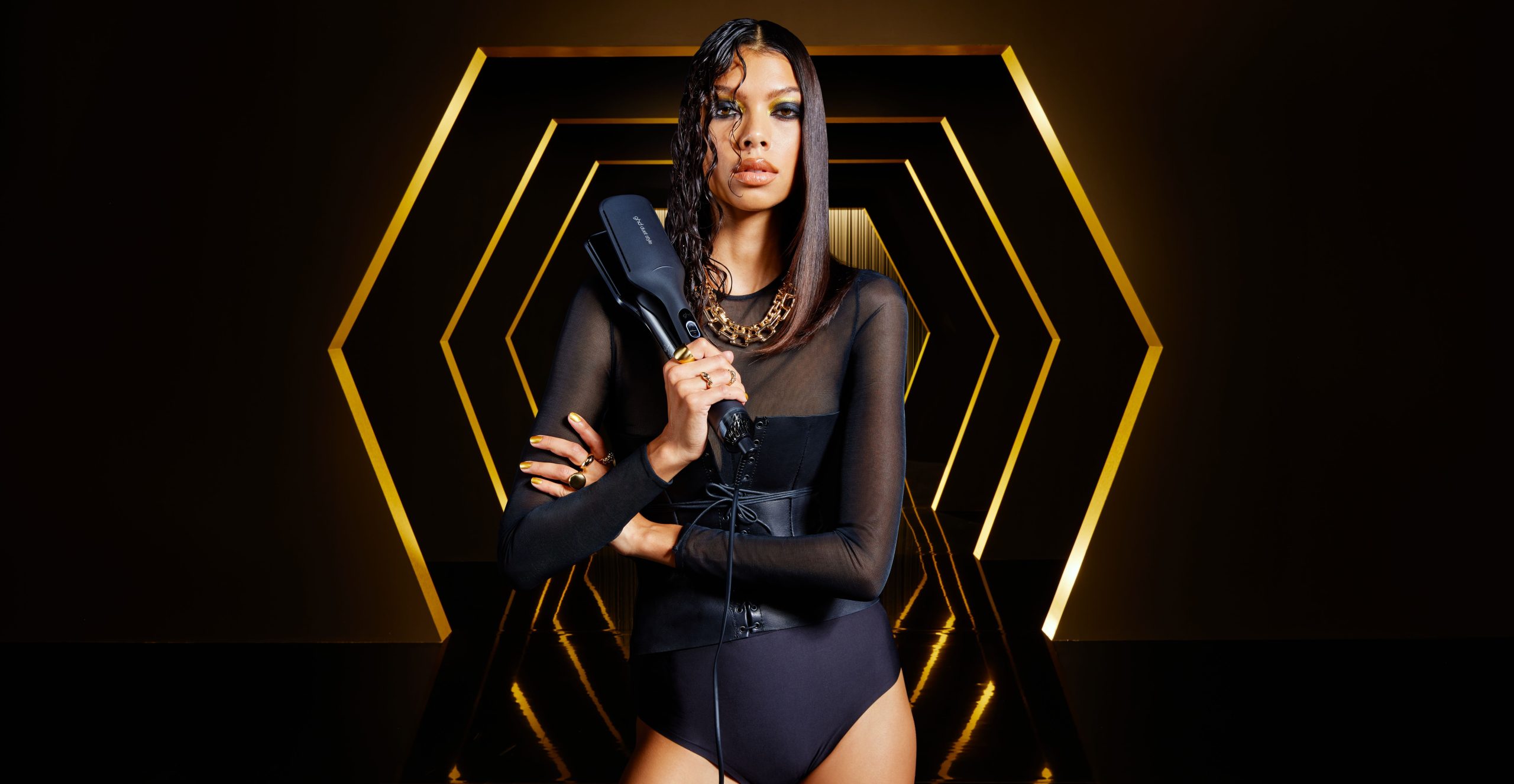
Both tools promise not to fry your hair, and both use sensors to back that up.
Dyson’s got thermistors that check temperature 30 times a second, and it adjusts airflow heat in real time. The idea is: never overheat, never under-dry. It’s super precise.
ghd’s sensor game is also tight, but more focused. Its ultra-zone plates keep things locked at 185°C, which the brand swears is the magic number for shaping without frying. No options, just one temp. That sounds limiting, but it actually simplifies things—and for most hair types, it works perfectly.
So while Dyson lets you tinker, ghd sticks to its guns—and gets it right.
Design and ergonomics: it’s a vibe
Dyson, as always, goes for the sleek, futuristic look. The Airstrait is slim, long, and sculptural, like a tool from a sci-fi movie. It’s got a premium finish—especially in Prussian Blue or Copper. It’s not light, but the weight is evenly balanced.
ghd is shorter, chunkier, and more traditional. Matte black or white, clean lines, and a more salon-like feel. It’s easier to twist and rotate, especially when curling or waving. If your styling routine involves lots of wrist movement, the ghd shape feels more intuitive.
So even though both weigh about the same, Dyson feels sleeker in hand, while ghd feels more maneuverable.
Maintenance and extras
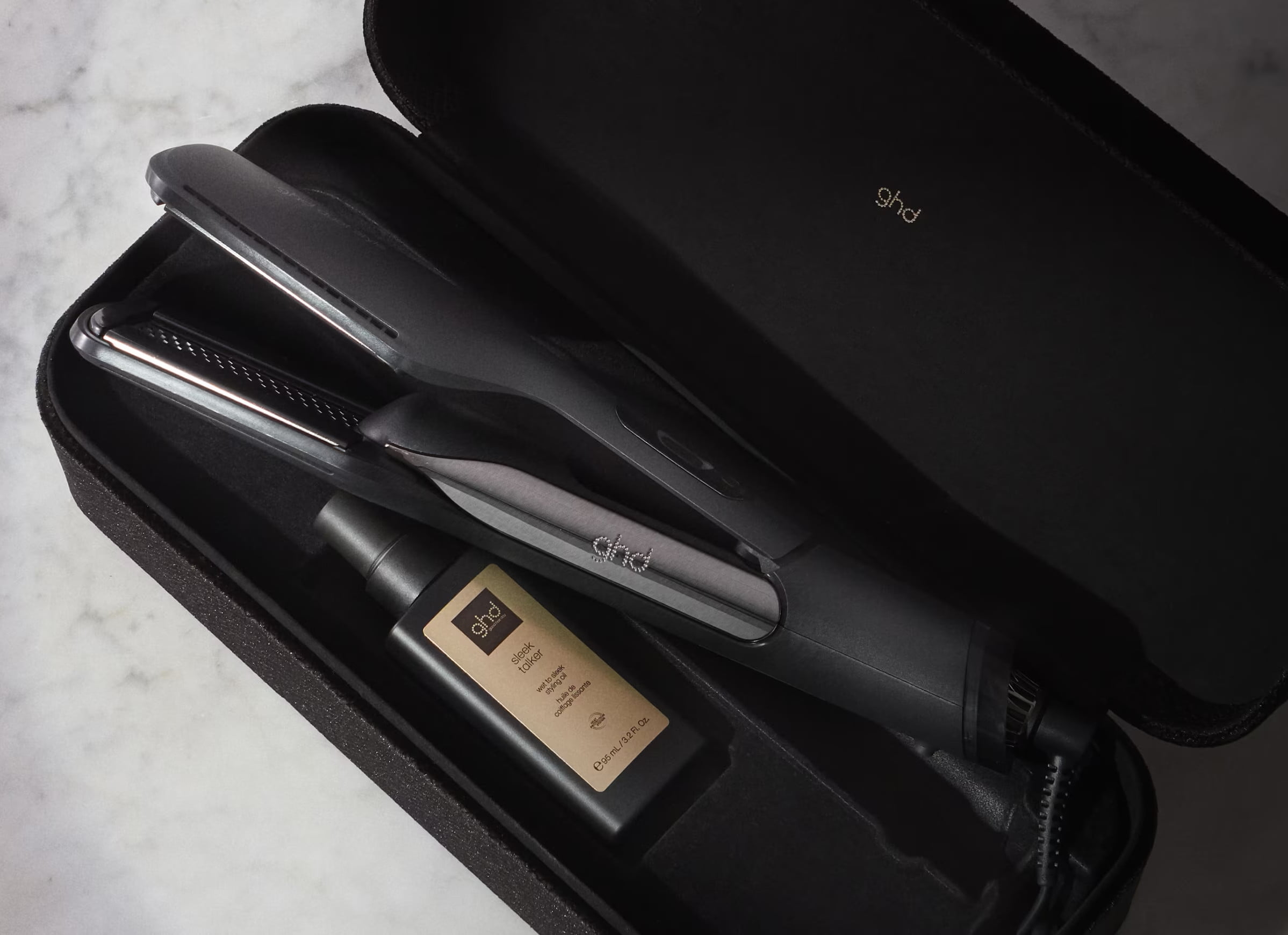
Nothing crazy here. Both need occasional wipe-downs, especially if you use serums or sprays. Dyson might collect more dust in the vents over time—those air slots can trap stuff. ghd’s plates are easier to clean, and that’s about it.
Dyson gives you a heat-resistant mat and app connectivity (which… honestly, we didn’t find essential, but it’s there). ghd includes a heat guard for travel and storage. No apps, no extras, just what you need.
So, which one should you buy?
Let’s get real.
If you want your hair straight, shiny, and healthy—and nothing else—Dyson’s Airstrait is a dream. It’s gorgeous, smart, and way more gentle than we expected. No plates, no pulling, no drama. You’ll look polished every time. But it’s a one-trick pony.
The ghd Duet Style? It’s the one you reach for when you want to do a little bit of everything. Straighten, wave, curl—it can all happen with one tool. And it doesn’t just fake the wet-to-dry part—it nails it. Yes, it’s hotter. Yes, it makes more contact. But it gives you versatility, and that’s worth a lot.
So yeah—if you want creative control and the power to style on your terms, ghd takes the win. It’s more flexible, more familiar, and still gentle enough to use every day.
Unless all you want is sleek hair fast with zero heat plates touching your strands. Then you know where Dyson’s lane is. And honestly? It owns it.

